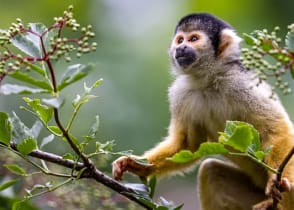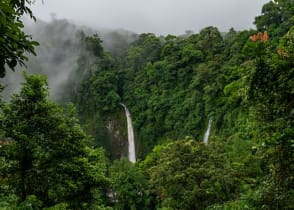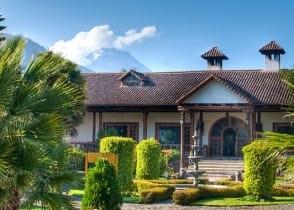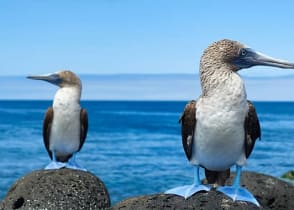20 Cutest Animals in the World and Where to See Them
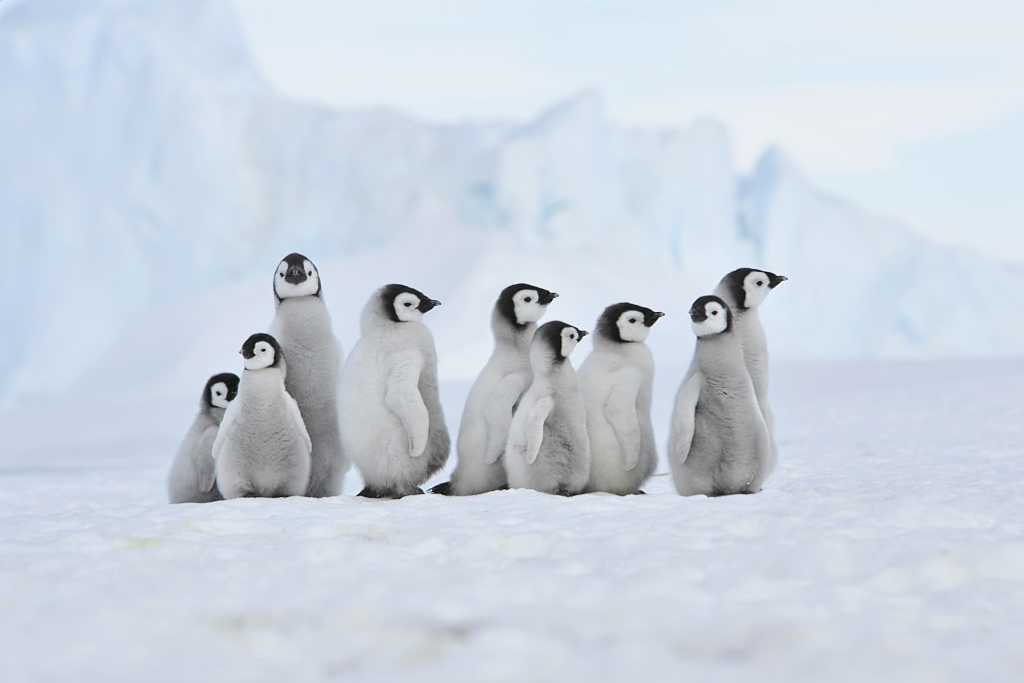
Snow Hill Island, Antarctica
The world is full of cute and cuddly animals, so whether on safari or a private wildlife walking tour, the following are among the most endearing you can discover in their natural habitats.
Several countries are now encouraging conscientious expeditions into rugged landscapes to explore the charm of witnessing wildlife foraging, sleeping, and playing. From sloths in the Costa Rican rainforests to meerkats in the Kalahari Desert, you can see the fascinating creatures when traveling to iconic destinations.
The following list features the best destinations in which to find the world’s cutest animals and highlights how locals contribute to conservation to ensure a sustainable future for the fauna.
1. Sloth • Monteverde Cloud Forest, Costa Rica

The word sloth is synonymous with “lazy” and in the animal’s case refers to its slow movements and sleepy eyes. Their lackadaisical demeanor keeps them well hidden in the rainforest canopy, where they find protection from predators like harpy eagles and jaguars.
Costa Rica is home to one of the largest accessible sloth populations in the world, making it likely you will spot one or a bed lazing about in the trees on our Costa Rica eco-tour vacation. Reserves shield the sloths and other interesting wildlife famous for settling in Monteverde’s unique ecosystem.
Learn more: Costa Rica Tours • Costa Rica Travel Guide
2. Mountain Gorilla • Bwindi Impenetrable National Park, Uganda

The Ugandan Wildlife Authority defends the pristine beauty of the country’s oldest and most biologically diverse rainforest at the Rift Valley's edge. It’s a wilderness paradise that is home to an estimated 400 mountain gorillas, nearly half of the world’s populace.
Rangers set out daily to view the gorilla colonies scattered across the landscape, taking visitors through the dense jungle and sporadic mist for a breathtaking vision of the animals in their nests, which provide comfort, warmth, and protection. You can join them on a personalized Uganda safari.
Learn more: Uganda Safaris & Gorilla Trekking • African Safari Travel Guidets, which provide comfort, warmth, and protection.
Learn more: Uganda Safaris & Gorilla Trekking • African Safari Travel Guide
3. Pygmy Marmoset • Cocha Salvador Lake, Peru

The greater protected landscape of Manu National Park encompasses a variety of ecosystems, including cloud forests, Andean grasslands, and lowland rainforests. The pygmy marmoset monkey’s name gives away the size of one of the world’s smallest primates that you can observe on Zicasso’s unexpected Peru tour for seniors. Their minuteness allows them to hide in the canopy and branches of quassia trees, protecting them from predators.
As you travel through Peru, trained guides will help draw troops of marmosets out of their hiding places to reveal the true scope of their dimensions compared with the magnificent breadth of the surrounding lowland rainforest.
Learn more: Peru Tours • Peru Travel Guide
4. Koala • Lone Pine Sanctuary, Australia

Koalas are Australia’s iconic furry creature and you may capture images of them hugging eucalyptus trees and feeding on the leaves as you travel Lone Pine Sanctuary in Queensland. Their fluffy coats and puzzled expressions have garnered a huge following of animal lovers eager to view the marsupials in their natural state - sleeping up to 22 hours daily.
The Lone Pine Sanctuary allows visitors to connect with the wildlife and better understand the importance of sustainable living by making positive changes to our environments to protect the natural habitats of native wildlife.
Learn more: Australia Tours • Australia Travel Guide
5. Giant Pandas • The Bifengxia Giant Panda Base, China

The Chinese giant panda is a highly regarded animal and national heritage symbol that is being preserved for future generations. Nurseries and research centers exist around China to help breed and sustain pandas to protect the diminished population in the wild.
The Bifengxia Giant Panda Base is a breeding and research facility in the Sichuan province. It allows volunteers, under supervision, a rare chance to get up close and personal with them as caretakers and to embrace the center’s growing role in the continued survival of the giant panda.
Learn more: China Tours
6. Orangutan • Tanjung Puting National Park, Borneo

The untamed wilderness of Tanjung Puting National Park in Borneo is known for its vibrant colors, mysteries, and support of the natural environment in which the fascinating orangutan can be found.
The endangered animals make nests at around 3,000 feet above sea level, but also live in grasslands, cultivated fields, and gardens. The adolescents are active throughout the day, but are most wild in the morning when the troops feed. You can trek through the wilds of Borneo or learn more about them in rescue facilities.
Learn more: Natural Cultural Wonders of Indonesia Tour
7. Meerkat • Kalahari Desert, Southern Africa

An exciting addition to any visit to South Africa, Botswana, and Namibia is the chance to catch a glimpse of the fascinating, mysterious meerkat. Living in the Kalahari and Namib deserts, they gather in gangs or mobs of 20 to 50, often taking over the abandoned burrows of other, smaller animals.
Intelligent, somewhat aggressive, and surviving on mostly insects, they are vigilant and always on the lookout for imminent danger, barking to warn off any would-be threats. Standing at attention, perfectly posed for any photo opportunity, it is a real treat to see them in their natural habitat when visiting Southern Africa’s top safari destinations.
Learn more: Southern Africa Safaris • Southern Africa Travel Guide
8. Emperor Penguins • Antarctica
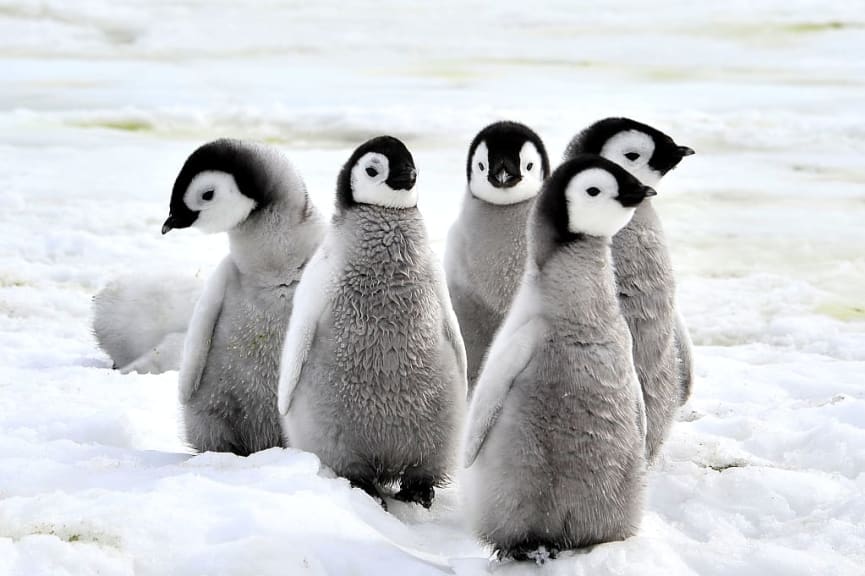
Crown an epic whales, seals, and penguins adventure to Antarctica with the ultimate image of baby emperor penguins huddling close together in the vast expanse of snow and intermittent protruding rocks. Each November, the iconic penguins of Antarctica birth chicks and form a “creche”. This entails adolescents huddling together for warmth while their parents search for food.
Emperor penguins are threatened due to rapid changes in their natural habitat from human activity, such as rising temperatures reducing breeding grounds and overfishing severely limiting their food sources. Seeing them is a memorable and educational experience.
Learn more: Antarctica Tours • Antarctica Travel Guide
9. Hector’s Dolphin • Akaroa, New Zealand

New Zealand’s seas are home to many magnificent and adorable marine mammals and animals, namely the smallest of the dolphin species, Hector’s dolphin. These stunning swimmers are the rarest marine dolphins in the world, but are commonly spotted in the Akaroa Harbour near Christchurch.
Their distinct facial markings, stocky bodies, and iconic rounded fins put them among New Zealand’s cutest water creatures and you will appreciate spotting them in the crystal-clear waters along the banks of Akaroa during our family-friendly tour of New Zealand.
Learn more: New Zealand Tours • New Zealand Travel Guide
10. Iberian Lynx • Iberian Peninsula, Spain

The Iberian lynx is fierce and cute, and you can spot it on a majestic landscapes trekking tour of Spain. It’s one of the country’s most magnificent sights and its diet consists primarily of European rabbits. Its tawny to bright yellow fur and distinct spots give it the look of a cheetah or leopard, but its long whiskers and furry ears separate it from its wild-cat counterparts.
Overhunting, poaching, and diminishing natural habitats have put a strain on the species, so visitors to Spain will learn about the region’s conservation efforts during tours of the peninsula and untamed countryside in search of the Iberian lynx.
Learn more: Spain Tours • Spain Travel Guide
11. Sugar Glider • New South Wales, Australia

The sugar glider lives in the tall forests and tropical terrain of eastern Australia. A nocturnal marsupial, it feeds on insects and birds, with its sweet tooth satisfied by nectar. It’s small, agile, and can glide across gaps in the trees up to 300 feet wide. On Ziccasso’s Australia highlights to off-the-grid discoveries itinerary, you may find the sugar glider living in tree hollows, where it searches for sap or pollen to satiate its tremendously sweet tooth, giving credence to its name.
When looking for sugar gliders in the wild, always have a trained guide and follow their advice on tracking, spotting, and respecting the territory and unique ecosystems.
Learn more: Australia Tours • Australia Travel Guide
12. Platypus • Tasmania, Australia

The platypus is an iconic Australian animal, but incredibly elusive and rare. They are endemic to Australia and Tasmania, where they actively feed, lay eggs, and nest, reflecting their famous mammalian and avian characteristics. They are known for their rubbery bills, webbed feet, fur, ability to secrete milk, and lay eggs. They often live in solitary conditions and feed on crustaceans, mollusks, and insects.
They are protected throughout Australia, but remain vulnerable to the degradation of their natural habitats across Tasmania and Australia’s east coast. Set out with a private guide to find them on a nature and adventure tour of Australia.
Learn more: Australia Tours • Australia Travel Guide
13. Kiwi • Stewart Island, New Zealand

The kiwi is the national bird of New Zealand and the name given to locals from the islands. The bird is one of the many fantastical animals shaped by the elements of the captivating North and South islands that you can visit on our off-the-beaten-path New Zealand tour. The flightless bird is generally nocturnal and often calls through the wilderness at dusk and dawn with piercing cries. They feed on worms, berries, and seeds, generally adapting to the different terrain across the country.
Stewart Island is considered a kiwi-spotting paradise at sundown, with the quiet evenings and open landscape providing the perfect atmosphere in which to spot the birds grazing.
Learn more: New Zealand Tours • New Zealand Travel Guide
14. Little Blue Penguin • Pohatu Marine Reserve, New Zealand

The little blue penguins of New Zealand are a spectacle of beauty and charm. They are considered the smallest genus of penguin and come ashore at night to burrow into the banks of the coastline. They are named for their blue backs, as well as their pale gray or blue irises.
At Pohatu Marine Reserve, you can find the largest colony of little blue penguins. They inhabit the gorgeous shoreline alongside prevalent marine life such as orcas, albatrosses, and Hector’s dolphins.
Learn more: New Zealand Tours • New Zealand Travel Guide
15. Tarsius Tarsier • Selayar, Indonesia

Tarsius tarsiers are found only in the primary and secondary forests of select Indonesian islands that you can visit on a natural and cultural wonders tour. They are known for their velvety fur, small round bodies, and scaly tails, reflecting their position as the smallest-known primate. They are nocturnal and most active at dusk, when they travel through the forest in search of places to forage and may sing as they return to their nesting grounds.
With its white-sand beaches, Selayar Island is a tropical paradise, but it also possesses dense rainforest foliage that hosts the active tarsiers in the greater Taka Bonerate National Park.
Learn more: Southeast Asia Tours • Southeast Asia Travel Guide
16. Rusty-Spotted Cat • Yala National Park, Sri Lanka

The rusty-spotted cat is one of the smallest wild cats in Asia and, with its short red and gray fur, easily blends into the foliage you will investigate during a pleasures of Sri Lanka trip. Nocturnal, they mainly live in dry forests and grasslands.
One of the largest populations exists in Yala National Park, which has light forest and grassy plains, perfect for the cats' hunting, sleeping, and social habits. They feed mostly on birds and rodents, but may also search for lizards, frogs, and insects. They find refuge in the trees when escaping from larger predators.
Learn more: Sri Lanka Tours • Asia Travel Guide
17. Ezo Momonga • Hokkaido, Japan

The Ezo momonga is also known as the Siberian flying squirrel. They are mainly nocturnal and live only in the colder and forested region of Hokkaido in northern Japan. Their enormous eyes help them to see in the dark while they climb trees, scurry, or glide through the air using their flattened tail for aerodynamics.
The winter in Hokkaido is different from that in south Japan, with cold fronts from Siberia bringing powdery snow across the terrain. These are perfect conditions for the Siberian flying squirrel that you can spot on a highlights of Hokkaido itinerary.
Learn more: Japan Tours • Japan Travel Guide
18. Bush Baby • South Africa

Bush babies got their name due to the loud, impressive cries they let out and because they are super-cute. Also known as lesser galagos, they inhabit the safari areas of southern Africa and live high up in leafy trees or thick bush.
They resemble bats, with large ears keeping them on high alert for danger, and hunt effectively at night. At around five inches and no more than about 10 ounces in weight, spotting one while on a night game drive on a Tswalu Kalahari Reserve safari Itinerary and Cape Town tour
is not always easy, but a huge treat if you do.
Learn more: South Africa Safaris • South Africa Travel Guide
19. Wombat • Tasmania and Mainland Australia

The wombat is the second-largest marsupial. Depending on whether a bare-nosed or hairy-nosed wombat, these bear-shaped creatures can be found in coastal regions, thick forests, or vast, dry landscapes throughout their native Australia.
Wombats are nocturnal and love to eat, spending as long as the average human does sleeping and eating, their sharp teeth shredding their favorite grasses. If threatened, they can run up to 25mph to escape animals such as wild dogs and foxes.
Learn more: Australia Tours • Australia Travel Guide
20. Blue-Footed Booby • The Galapagos Islands, Ecuador

These fascinating birds are found in parts of Central and South America, with about half of all breeding pairs found in the Galapagos. Named for their clown-like feet, the stunning blue stands out against rocks and water, flocks standing fearlessly alongside human visitors during Ecuador Amazon Rainforest and Galápagos Islands tours. They can live to around 17 years of age and enjoy a healthy diet, the fish they consume attributing to the color of their feet.
The blue touches are used to impress and secure a mate, as they dance in a ritual routine to find a partner for life. The booby does not store its eggs in nests, as other birds do, but scatters them on the ground, creating a barrier to let other birds know they belong to our blue-footed friends.
Learn more: Galapagos Islands Vacations • Galapagos Islands & Ecuador Travel Guide
Discover the Cutest Animals in the World
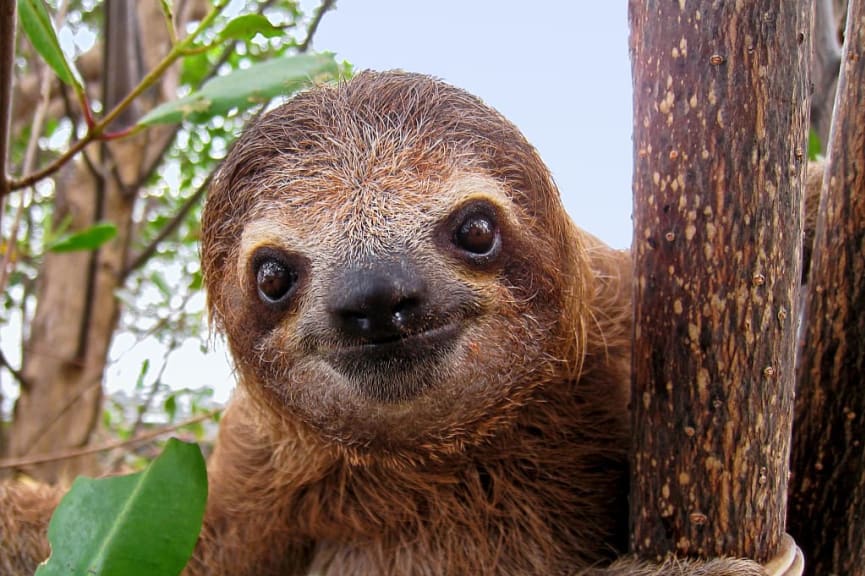
Wander beneath the emerald canopy of the Costa Rican forests in search of the slow-moving sloth or pace across the parched Kalahari Desert in South Africa at sunrise seeking out the fascinating meerkat as you search for some of the world’s cutest animals on Zicasso’s trips of a lifetime.
For more travel inspiration for your outdoor adventures, explore our nature and wildlife vacations and tours or browse helpful tips and information in the Zicasso travel blog.
Life-Enriching Travel Designed Just for You
- 1
Trips curated by the world’s top destination experts
- 2
Concierge-level service leading up to and during your trip
- 3
Unique, exclusive experiences and insider access

